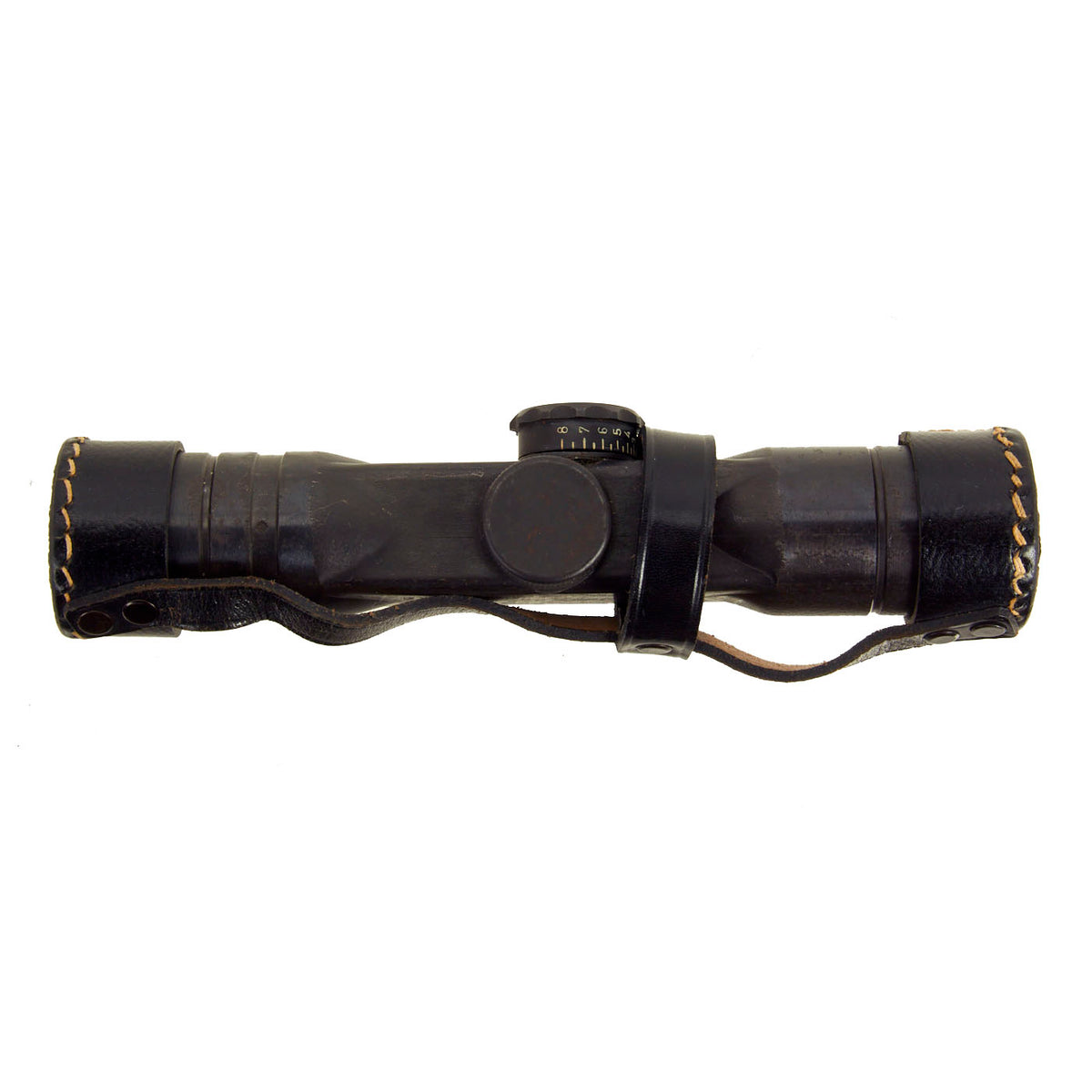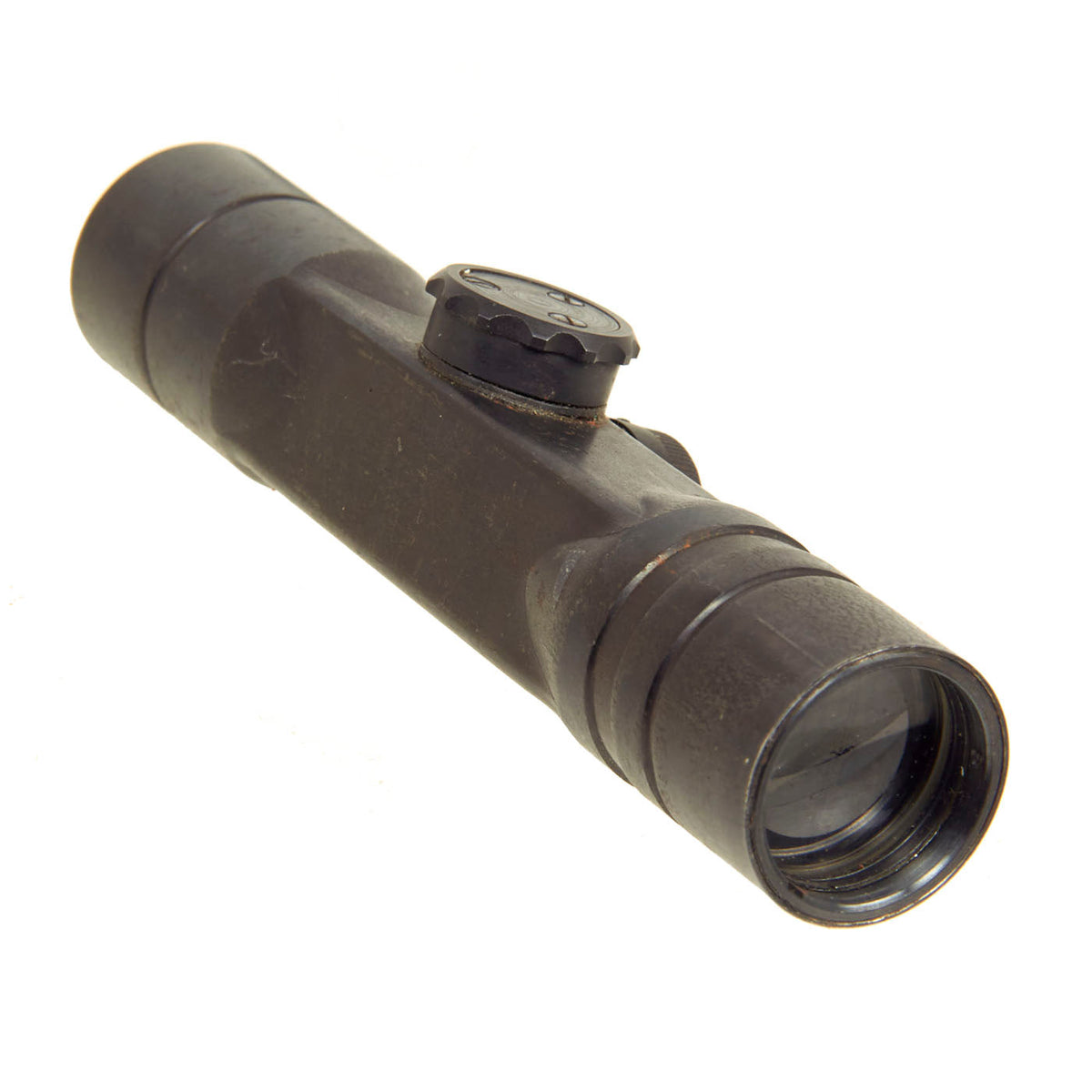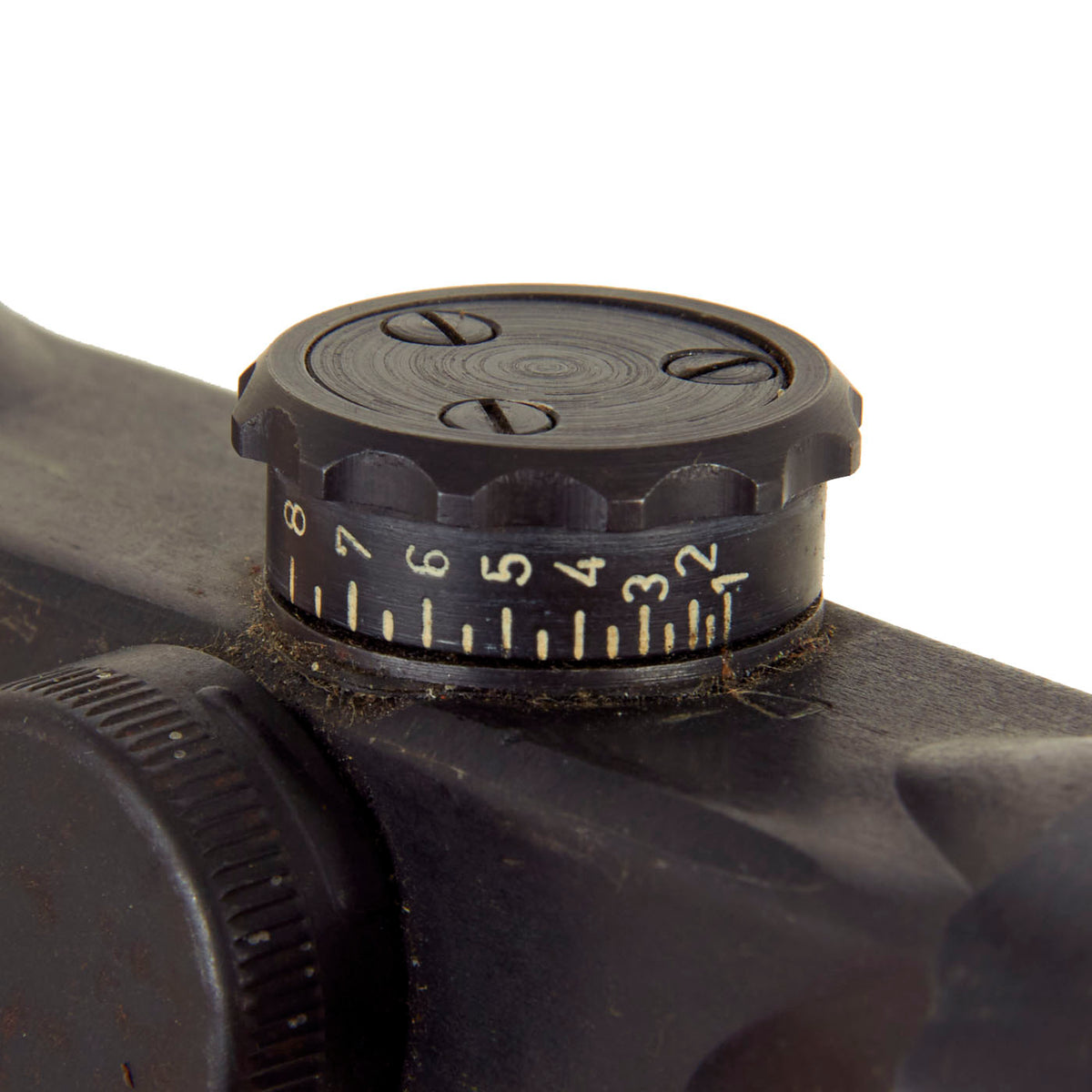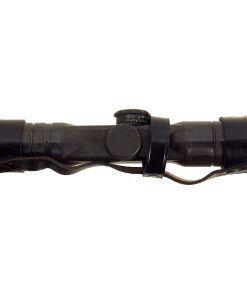Original German WWII Gw ZF 4x Telescopic Scope for the Gewehr G43 Rifle with Original Leather End Caps by Voigtlaender u. Sohn AG, Braunschweig Original Items
$ 1.095,00 $ 273,75
Original Item: Only One Available. The Gewehr 43 or Karabiner 43 is a 7.92×57mm Mauser caliber semi-automatic rifle developed by Germany during World War II. The design was based on that of the earlier G41(W), but incorporated an improved short-stroke piston gas system similar to that of the Soviet SVT-40. It was manufactured using innovative mass-production techniques.
The Gewehr-Zielfernrohr 4-fach (Gw ZF4x) or 4 power telescopic rifle sight, was one of the last great hopes of the beleaguered German sniper. Faced with increasingly skilled Soviet snipers, as well as massive numbers of regular troops, the military leaders pressed for a sniper rifle and scope combination capable of mass production. After a thorough examination of the Soviet PU telescopic sight and the semi-automatic M1940 Tokarev rifle, it has been indicated that the German military wanted a copy as fast as possible. This new scope was to be paired with the newly produced G43 semi-automatic rifle. The general idea was to produce every single G43 with the capability of having a telescopic sight mounted on an integral rail milled into the receiver. The end result was meant to be fielded as a designated marksman’s rifle as opposed to a dedicated sniper rifle. In practice, skilled snipers employed the G43 system. Production levels never reached the point where every good marksman could be equipped with one.
When carefully produced, the Gw ZF4 was quite capable as a sniper scope. Unfortunately for the Germans and subsequently fortunate for the allies, the quality control on the ZF4 was anything but consistent. It never saw the mass production requested in the original orders and workmanship tapered off under the constant bombing raids by the allies. Voigtländer, the company that designed the sight, seemed to have the most problems. Sights made by Opticotechna and J. G. Farbenindustrie seem to have experienced less problems. Compounding the problems, the accuracy of the G43 rifle never met expectations, which when combined with the ZF4 made for little hope of first round hits at longer sniping ranges.
In capable hands and when constructed properly, the Gw ZF4 was sufficiently successful in its role. Measuring 6″ long, it was made of stamped metal to save production time and material. It had flat sides that flared out to round cylinders at the objective and ocular ends. Elevation adjustment is via a turret mounted on the right side of the telescope body. It was a BDC-type turret marked in 50-meter increments from 100 to 800 meters. Each positive click approximated one half minute of angle. Windage was adjusted via a turret mounted on the top of the optic.
Turret adjustment was simple. Each turret has three locking screws. To zero the rifle, one first removed the screws from one turret, either elevation or windage. A small circular cover is then removed from the turret top, exposing the center adjuster and thereby allowing the shooter to adjust the reticle as needed. The adjuster moves quite smoothly and is easy to align. Once the reticle is in the proper position, the circular plate is placed back in position and the locking screws are reinstalled. As in the PU, the ZF4 does not have an optically centered reticle. You can observe it moving downward as you dial in longer ranges.
The condition of the optic is excellent and still functional from what we can tell. Both the elevation and windage knobs still click as they are meant to. Even though the optic is over 70 years old, the lenses are still very clear and able to pick up a solid sight picture. The markings are still clearly stamped into the bottom of the housing and they are as follows:
G w ZF 4
29813
ddx
“ddx” is the 3 letter ordnance code for Voigtlaender u. Sohn AG, Braunschweig. Early during WWII, Allied intelligence sources discovered the code, and despite concerted efforts, were unable to break the code. Even after the war when tons of documents were unearthed, the entire list of codes was not found, and thus some of the codes are still unknown. Fortunately ddx is a known code. Approximately 73,000 were produced by this manufacturer. The early produced optics were marked Gw ZF4 like this one, while later ones were marked K43 or double marked with both. DDX produced optics were also intended to be used with the FG-42 and are identified by an L next to the designation. We carefully searched and this one does not have it.
To the right of the maker code is a Blue Triangle. The color of the triangle indicates the type of grease that was used internally. Blue, being the most common, was for cold climate, white was tempered climate and green was for hot climates.
The designation of the scope changed and was announced on December 15, 1944 and was changed to ZF K43, meaning this is an early example!
This is a wonderful piece of equipment and history, it even still has a functional set of leather end caps!
Comes more than ready for display or even use!
Fast Shipping with Professional Packaging
Thanks to our longstanding association with UPS FedEx DHL, and other major international carriers, we are able to provide a range of shipping options. Our warehouse staff is expertly trained and will wrap your products according to our exact and precise specifications. Prior to shipping, your goods will be thoroughly examined and securely secured. We ship to thousands clients each day across multiple countries. This shows how we're dedicated to be the largest retailer on the internet. Warehouses and distribution centres can be located throughout Europe as well as the USA.
Note: Orders with more than one item will be assigned a processing date depending on the item.
Before shipping before shipping, we'll conduct a thorough inspection of the items you have ordered. Today, the majority of orders will be delivered within 48 hours. The delivery time will be between 3-7 days.
Returns
The stock is dynamic and we cannot completely manage it because multiple stakeholders are involved, including our factory and warehouse. So the actual stock may alter at any time. It's possible that you may not receive your order once the order has been made.
Our policy is valid for a period of 30 days. If you don't receive the product within 30 days, we are not able to issue a refund or an exchange.
You can only return an item if it is unused and in the same state as the day you received it. You must have the item in its original packaging.
Related products
Uncategorized
Uncategorized
Uncategorized
Uncategorized
Uncategorized
Uncategorized
Uncategorized
Uncategorized
Uncategorized
Armored Burgonet Helmet & Polearm from Scottish Castle Leith Hall Circa 1700 Original Items
Uncategorized
Uncategorized
Uncategorized
Uncategorized
Uncategorized
Uncategorized
Band of Brothers ORIGINAL GERMAN WWII Le. F.H. 18 10.5cm ARTILLERY PIECE Original Items
Uncategorized
Uncategorized
Uncategorized
Uncategorized













































































